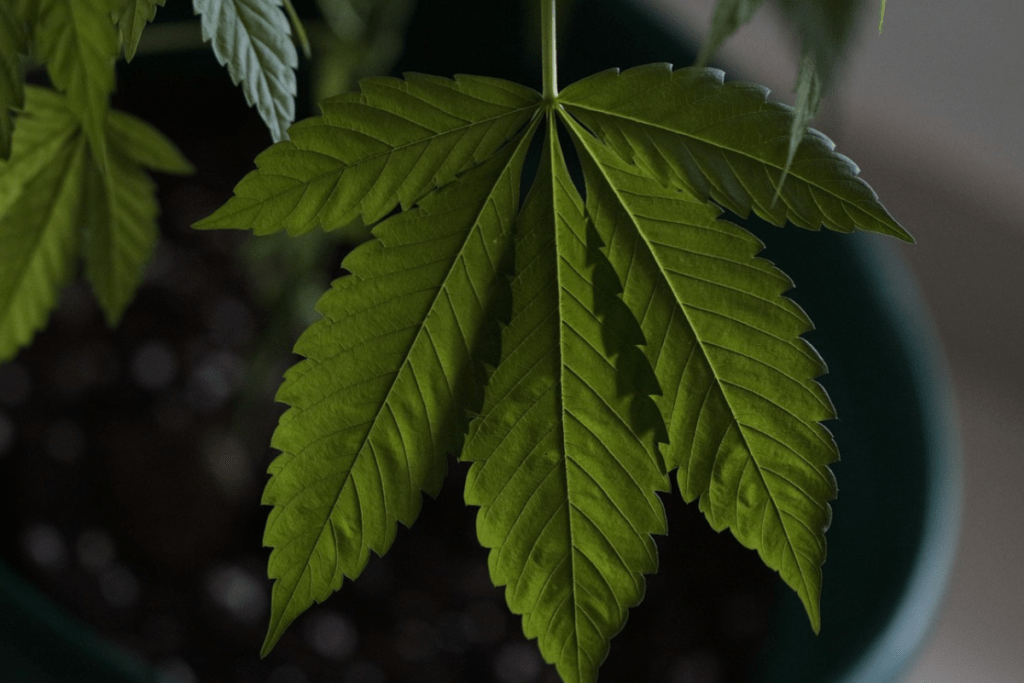With the growing popularity of cannabis for medicinal and recreational purposes, consumers are constantly seeking new, innovative ways to experience its benefits. Cannabis patches have emerged as an increasingly popular method for those looking to consume cannabis in a discreet, convenient, and non-invasive way.
But how do cannabis patches work? Are they effective? And what makes them different from traditional methods like smoking or edibles?
In this article, we will explore the science behind cannabis patches, how they deliver cannabinoids, and why many users are turning to them as an alternative. Whether you’re new to cannabis or simply looking for a different consumption method, understanding the mechanics of cannabis patches is crucial for making informed choices.
What Are Cannabis Patches?
A cannabis patch is a transdermal delivery system designed to administer cannabinoids directly through the skin into the bloodstream. These patches are typically infused with either THC (tetrahydrocannabinol), CBD (cannabidiol), or a combination of both. The patch is applied to the skin, and over time, it releases cannabinoids in controlled doses, allowing the user to experience the effects gradually and consistently.
Cannabis patches come in various sizes, shapes, and formulations. They are often used by those seeking relief from chronic pain, anxiety, inflammation, and other medical conditions without the potential harmful side effects of smoking or ingesting cannabis.
How Do Cannabis Patches Work?
Cannabis patches work through a process called transdermal absorption, where active compounds from the patch are absorbed into the skin and pass into the bloodstream. This method allows cannabinoids to bypass the digestive system and liver, which is particularly beneficial for people who want to avoid the potential for stomach irritation or who have difficulty digesting edibles.
The Science of Transdermal Delivery
Transdermal delivery systems, such as cannabis patches, are designed to allow substances to penetrate the skin’s outer layer (epidermis) and enter the bloodstream through the dermis (the deeper layer of skin). The key advantage of transdermal patches is their ability to provide a slow, steady release of the active ingredients over time, which leads to a more controlled and prolonged effect compared to other methods of consumption.
The skin acts as a barrier, but certain substances, including cannabinoids, can pass through with the help of special carriers and enhancers in the patch’s formulation. These ingredients help to increase the skin’s permeability, allowing the cannabinoids to enter the bloodstream more efficiently.
Cannabinoid Absorption Rate
When cannabis patches are applied, the cannabinoids are slowly absorbed through the skin over an extended period. Unlike smoking, where the effects are almost immediate, the cannabinoids in a patch are released over several hours. This slow release can result in a more gradual onset of effects, which can last for up to 12 to 24 hours, depending on the formulation.
Cannabis patches are often preferred by individuals seeking long-term symptom management, as they provide a consistent level of cannabinoids without the need for re-dosing throughout the day.
Benefits of Cannabis Patches
Cannabis patches offer several unique benefits that set them apart from traditional consumption methods like smoking, vaping, or edibles. Some of the most notable advantages include:
1. Discreet and Convenient
One of the most appealing aspects of cannabis patches is their discreet nature. They can be easily applied under clothing and are virtually invisible, making them a great option for individuals who want to consume cannabis in public or in situations where discretion is important.
Additionally, cannabis patches do not require any special preparation, such as rolling a joint or measuring out an edible dose. Once applied, the patch does the work, making them an incredibly convenient option for busy individuals.
2. Non-Invasive and No Smoke Inhalation
Unlike smoking or vaping, cannabis patches do not involve inhaling smoke or vapor, which can be harmful to the lungs over time. By providing a non-invasive delivery system, cannabis patches offer a healthier alternative to more traditional methods, especially for individuals with respiratory issues or concerns about the negative effects of smoke.
3. Consistent Dosing
Cannabis patches are designed to release a controlled, steady amount of cannabinoids over time. This ensures consistent dosing and helps prevent the fluctuations in cannabinoid levels that can occur with smoking or edibles. With patches, users can experience more predictable effects, making it easier to manage their cannabis intake.
4. Long-lasting Effects
Because cannabis patches provide a slow, continuous release of cannabinoids, the effects can last much longer than other methods. For users seeking sustained relief from chronic pain, anxiety, or other medical conditions, cannabis patches can provide all-day or even overnight symptom management.
5. Easy to Use and Apply
Cannabis patches are incredibly easy to use. Most patches simply need to be adhered to clean, dry skin, and they begin working immediately. Since there is no need to consume or inhale cannabis, the application process is straightforward and accessible to all users, including those with limited experience with cannabis.
How to Use Cannabis Patches
Using a cannabis patch is simple, but there are a few important steps to ensure proper usage and effectiveness. Here’s a step-by-step guide on how to apply and use a cannabis patch:
- Choose the Right Patch
- Cannabis patches come in different formulations, such as THC-only, CBD-only, or combinations of both. Make sure to choose a patch that aligns with your desired effects and needs.
- Clean the Application Area
- Before applying the patch, ensure the skin is clean and dry. This will help the patch stick better and improve its absorption.
- Apply the Patch
- Peel off the backing from the patch and apply it to an area of skin with little hair, such as the upper arm, wrist, or the back. Avoid areas with broken skin or irritation.
- Leave It On for the Recommended Duration
- Follow the manufacturer’s instructions regarding how long to leave the patch on. Typically, cannabis patches are worn for 8 to 12 hours, but some formulations may last longer.
- Remove and Dispose
- After the recommended time, carefully remove the patch and dispose of it according to local guidelines.
Factors to Consider When Using Cannabis Patches
While cannabis patches can be a highly effective and convenient method of consumption, there are a few factors to consider before incorporating them into your routine:
1. Skin Sensitivity
Some users may experience skin irritation or discomfort when using cannabis patches, especially if they have sensitive skin. It’s important to test a patch on a small area of skin first to ensure you do not have an allergic reaction or irritation.
2. Cannabinoid Dosage
The strength of cannabis patches can vary widely depending on the brand and formulation. Be sure to start with a low dose and gradually increase as needed. While the effects of patches are often gradual, it is still essential to avoid taking too much, which could lead to unwanted side effects.
3. Long Onset Time
Because cannabis patches work slowly, the onset of effects may take anywhere from 30 minutes to 2 hours. If you’re used to the immediate effects of smoking or vaping, it’s important to be patient and not apply another patch too quickly.
4. Cost
Cannabis patches tend to be more expensive than other methods of consumption, such as flower or edibles. However, because they provide long-lasting effects, they may offer better value for some users in the long term.
Types of Cannabis Patches Available
Cannabis patches come in a variety of types, each designed for specific needs and preferences. Here are some of the most common types of cannabis patches available on the market:
- THC Patches
- THC patches are primarily used for pain management, anxiety reduction, and sleep enhancement. These patches are ideal for individuals looking for the psychoactive effects of THC.
- CBD Patches
- CBD patches do not produce a high, making them a good choice for users seeking therapeutic benefits without the intoxicating effects of THC. These patches are often used for managing pain, inflammation, and anxiety.
- Hybrid Patches
- Hybrid cannabis patches contain a balanced combination of THC and CBD. These patches offer the benefits of both cannabinoids, providing a more holistic experience that can address a wider range of symptoms.
Potential Side Effects of Cannabis Patches
While cannabis patches are generally considered safe, there are some potential side effects to be aware of. These can include:
- Skin irritation: Some users may experience redness, itching, or a rash at the site of the patch.
- Drowsiness or fatigue: Particularly with high-THC patches, some users may feel tired or sedated.
- Headaches: Some people may experience mild headaches, especially when using a patch with high THC content.
- Dry mouth: A common side effect of THC consumption is dry mouth, also known as cottonmouth.
Conclusion: Are Cannabis Patches Right for You?
Cannabis patches offer a non-invasive, discreet, and effective method for consuming cannabinoids. With their steady release of THC or CBD, they provide a consistent and long-lasting experience without the need for smoking or ingesting cannabis in other forms. Whether you’re seeking relief from chronic pain, anxiety, or simply looking for a more convenient way to enjoy cannabis, cannabis patches can be an excellent option.
As with any cannabis product, it’s essential to start with a low dose and monitor how your body reacts. Always choose a patch that fits your specific needs, and consult with a healthcare professional if you have concerns about using cannabis patches as part of your wellness routine.
References:
- Morgan, C. J. A., et al.: Cannabinoid Effects on Human Memory
- Wilkins, J. A., et al.: Transdermal Delivery Systems for Cannabinoids (Journal of Pharmaceutical Sciences).
- Huestis, M. A., et al.: Cannabis Use and Its Effect on Driving Performance (Drug and Alcohol Dependence).
- Charron, D. G., et al.: Cannabinoids and Pain Management: An Overview of Cannabis-Based Patches (Journal of Pain Research).
- Grotenhermen, F., & Russo, E. B.: Cannabis and Cannabinoids: Pharmacology, Toxicology, and Therapeutic Potential.” CRC Press).




